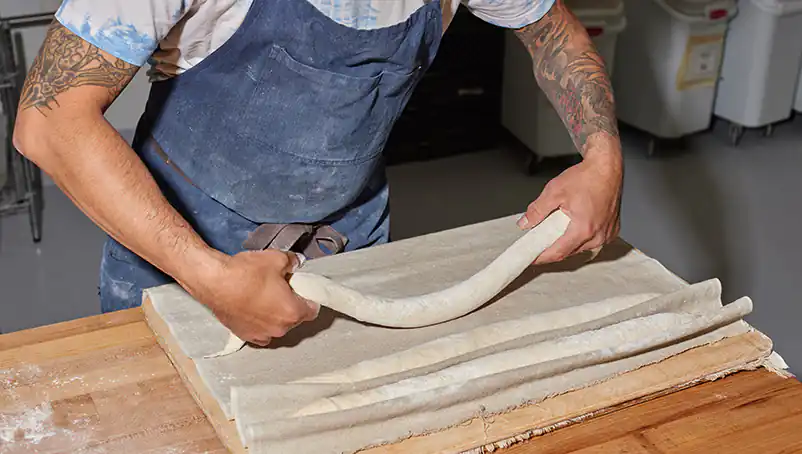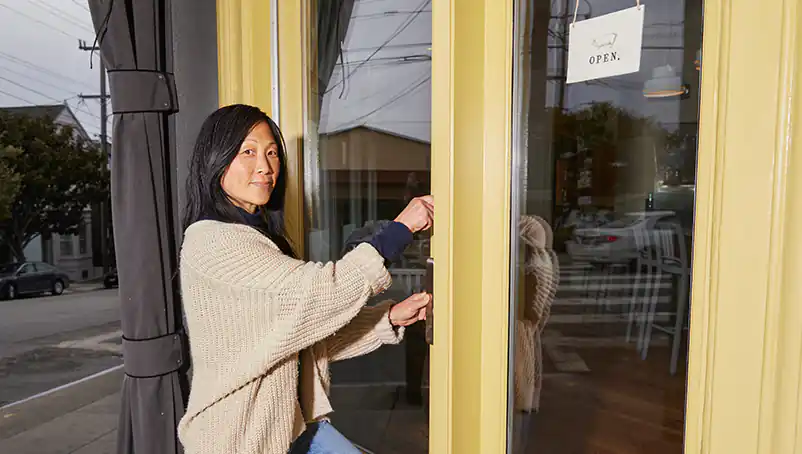You found the perfect location. You perfected your burger. But now you’re faced with what might feel like a big challenge: restaurant funding.
We’ve put together a guide covering all facets of restaurant loans to help you discover what you need to know about your business, potential lenders and how funding options might line up with your plans. Read on to discover ten different funding possibilities for brand new concepts and existing restaurants looking to expand.
What do you need to know to get restaurant funding?
A big part of finding and securing restaurant financing is having a firm grasp on the costs and potential profits for your eatery. You’ll need money for licensing, training, equipment, inventory, and enough funding to cover the expenses while you’re launching your restaurant.
How do you figure out exactly what you need? The first step is creating a solid business plan.
A restaurant business plan is a detailed look into your goals (empanadas for everyone) and how to achieve those goals (rehabbing a fast food sub shop with a drive-thru). This is also where you can create graphics or charts — for example, the number of people that eat empanadas weekly or lack of competition in a 20-mile radius — to help sell your idea.
Outlining your business plan is a good time to answer a few key questions a bank or potential funder will likely ask you:
- How much money do you need and what will you use the funds to do? Show you’ve done your homework to price out the cost of equipment, furniture and your operating costs. Potential investors want to know exactly how you’ll be spending the money.
- What’s your credit score and do you have any outstanding debts? A higher credit score often signals to a lender you’re more likely to pay on time. But restaurant loans are possible, even if you have bad credit. (Credit reporting agency Experian notes that a credit score of 5-600 is typically considered a “poor” score.) Bear in mind, you might end up with a higher interest rate or shorter repayment terms if your credit score is lower.
- How do you plan to repay the loan and do you have any available collateral? Here, you’ll want to detail your income projections, i.e., how much money you think you’ll bring in over the course of a typical dinner service and week of operation. You may also consider using other assets you own — property, for example — as collateral to help secure a loan.
What should you ask a potential lender about restaurant business loans?
When you’re assessing different restaurant loan options, it’s important to understand exactly when you’ll have the money in your account and what the lender’s expectations are for paying off the loan. Then, you can balance that information with your restaurant’s current and future needs.
- How long will it take to get funding for my restaurant? Knowing when funds will arrive in your account can help keep you from being overdrawn or needing to scramble to cover the cost of an important or costly delivery like the alcohol for your bar program.
- What is the loan’s interest rate? This is the percentage you’ll owe on top of the loan amount. Be sure to check if the rate is fixed or variable (it could change over the term of the loan).
- What are the terms of the loan? Make sure the payment terms are explicit about how much you’re paying and how often you’re paying it. Ask if there are penalties for prepaying your loan and how much late fees will incur.
- What’s the reputation of a potential lender? Research the company or individual who is lending you money. Find out about potential customer service or payment issues by searching online reviews and seeing if any complaints have been filed with the Better Business Bureau.
7 restaurant financing options for a new concept
While banks or credit unions might be the first place you picture when you think about funding for a restaurant, there are lots of other opportunities for raising money before you open the doors. Here are seven possibilities when you’re looking to launch a concept:
1. Banks and credit unions
Banks and credit unions offer two distinct products when it comes to restaurant financing: loans and lines of credit.
Restaurant loan applications typically take a few weeks to process. If your business is approved, you may also be required to put up collateral (property or an asset you own) or a personal guarantee that you’ll pay back the loan amount plus interest. Banks will often give you a range of options for paying back a loan with a higher interest rate if you opt to pay it back over a longer period of time.
A business line of credit works like a personal credit card. You have a set credit limit from a bank or lender that you can use for business expenses. You then have to pay back that money monthly or annually. A line of credit can provide an infusion of cash and help improve your business credit score if you pay it back on time.
Something to know: Restaurants are often characterized as a risky investment. Researchers at Cornell University found that slightly more than 3 in 5 independent restaurants (61%) fail in the first year — and it may be difficult to find a bank willing to sign off on a loan.
2. Small Business Administration loan
The Small Business Administration (SBA) played a key role in aiding restaurants during the pandemic with the Restaurant Revitalization Fund. But long before COVID-19, SBA restaurant loans helped chefs to realize their dream of opening a new eatery.
The SBA usually guarantees a portion of a loan to help a small business secure financing. Restaurant SBA loans are issued in partnership with lenders, like brick-and-mortar banks.
The most common is an SBA 7(a) loan, which leads up to $5 million, to cover the cost of restaurant equipment or the purchase of an existing restaurant or real estate. The SBA sets the maximum interest rates and fees that lenders can charge depending on the loan size and repayment terms.
The SBA also works with lenders like community development financial institutions on microloans for up to $50,000. While you can’t buy real estate with a microloan, you can e use them for the restaurant’s daily operations or to purchase furniture for a new outdoor dining space.
3. Crowdfunding
If you think people will get excited about your vegan ice cream recipe, you could build out a campaign on a crowdfunding platform. Sites like Indiegogo or Kickstarter let you offer perks like free meals or a t-shirt at different contribution levels from individual donors.
Crowdfunding is not just restaurant funding. It can generate advance interest in your business, providing customers and cash flow before you’ve made your first empanada. But know that after fulfilling the promised rewards and paying a crowdfunding platform’s fees (often roughly 10%), you may not have a lot of capital left to use.
4. Investment crowdfunding
Investment or regulation crowdfunding is a newer type of restaurant financing. Instead of free ice cream scoops or another perk, would-be investors are offered a financial incentive for investing on sites like Honeycomb Credit or Mainvest.
You keep the equity in your restaurant but typically promise to pay investors back over a set period of time with a fixed interest rate. While you can raise up to $5 million, restaurateurs often raise far less (more like tens of thousands of dollars), leveraging the money and interest generated to secure a larger loan from a bank with a lower interest rate.
5. Private investors
Venture capital or angel investing — wherein a company, small group or individual offers restaurant funding in exchange for equity — is not common for independent restaurants that don’t have aims at franchising or opening a host of locations.
In addition to your business plan, you may also want to prepare food or hold a formal dinner with a brief talk from your chef about the concept to help would-be investors learn more about what you’ll be serving.
Keep in mind that once private investors have equity (partial ownership) in your restaurant, they’ll likely also expect to have a say in the decisions for your business.
6. Friends and family
Instead of a formal restaurant loan, friends and family may be willing to invest in a new restaurant concept because they believe in you or have had your biscuits at family gatherings for years.
You often won’t need a formal pitch or elaborate presentation, but you do need to discuss what could happen if your venture fails. Set the right expectation about the risks and length of an investment to make sure you don’t harm an important relationship.
7. Self-funding
It may take longer to get an idea off the ground, but self-funding gives you the time and more opportunities to do market research to refine your idea before opening a food truck or brick-and-mortar restaurant.
Start with small pop-ups using the licensed commercial kitchens of existing restaurants or at craft fairs or breweries looking for someone to serve food to a hungry crowd on the weekends. Just be sure you secure all the proper licensing before you get started. Once the word is out, dive into private catering or catering events to raise additional funds.
3 types of restaurant loans for an established business
You’ve garnered some positive online reviews and even done a segment with a local television anchor. Maybe you’re thinking about expanding or investing more in your meatball shop. There are a number of restaurant loans to navigate short-term cash flow crunches or your long-term plans for a sister restaurant.
1. Equipment loans
Nobody knows when the walk-in fridge is going to quit, but you’ll still need one for weekend brunch. Equipment financing can help you cover the cost of replacing or upgrading a big piece of kitchen equipment like a pizza oven. (Or, if you have commercial property coverage, your insurance company can help pay for a replacement — no financing required.)
A lender or the manufacturer might offer funding for a restaurant looking for a new commercial mixer. You would then be expected to pay it off in monthly installments.
An equipment financing lender may also offer a sale-leaseback if you own a valuable piece of kitchen equipment. Here, you’re taking cash from a lender and making lease payments on the stove you previously owned to purchase another piece of equipment.
2. Purchase order financing
When your hot sauce is… well, hot, you may need capital to pay for the initial bottling run and packaging. Purchase order financing, where you receive a cash advance from a lender after you’ve got a signed order from a customer, can be a short-term bridge to launching a new product line.
Approval rates are typically faster than a traditional bank loan, although the repayment terms are often much shorter.
3. Commercial real estate loans
If your restaurant is more established, you might consider a commercial real estate loan.
There are two main structures: an amortized loan (wherein you pay in set monthly installments for a fixed period of time, typically under 15 years) or a balloon loan (where you pay monthly installments until a large “balloon” payment is due on the remaining balance, usually ten years or less).
Getting ready to purchase a building or a set of ovens for your bakery? A 504 loan is a restaurant SBA loan for up to $5 million that you can use to pay for real estate, building improvements or equipment.
How NEXT helps you find the right restaurant insurance
You need insurance to protect the investment you’re making in your restaurant. NEXT offers customized, reliable restaurant insurance at an affordable price.
Get insurance that fits your business. That’s why we designed a fast and simple way to get restaurant insurance online and receive your certificate of insurance in about 10 minutes.
Get your instant quote now.






